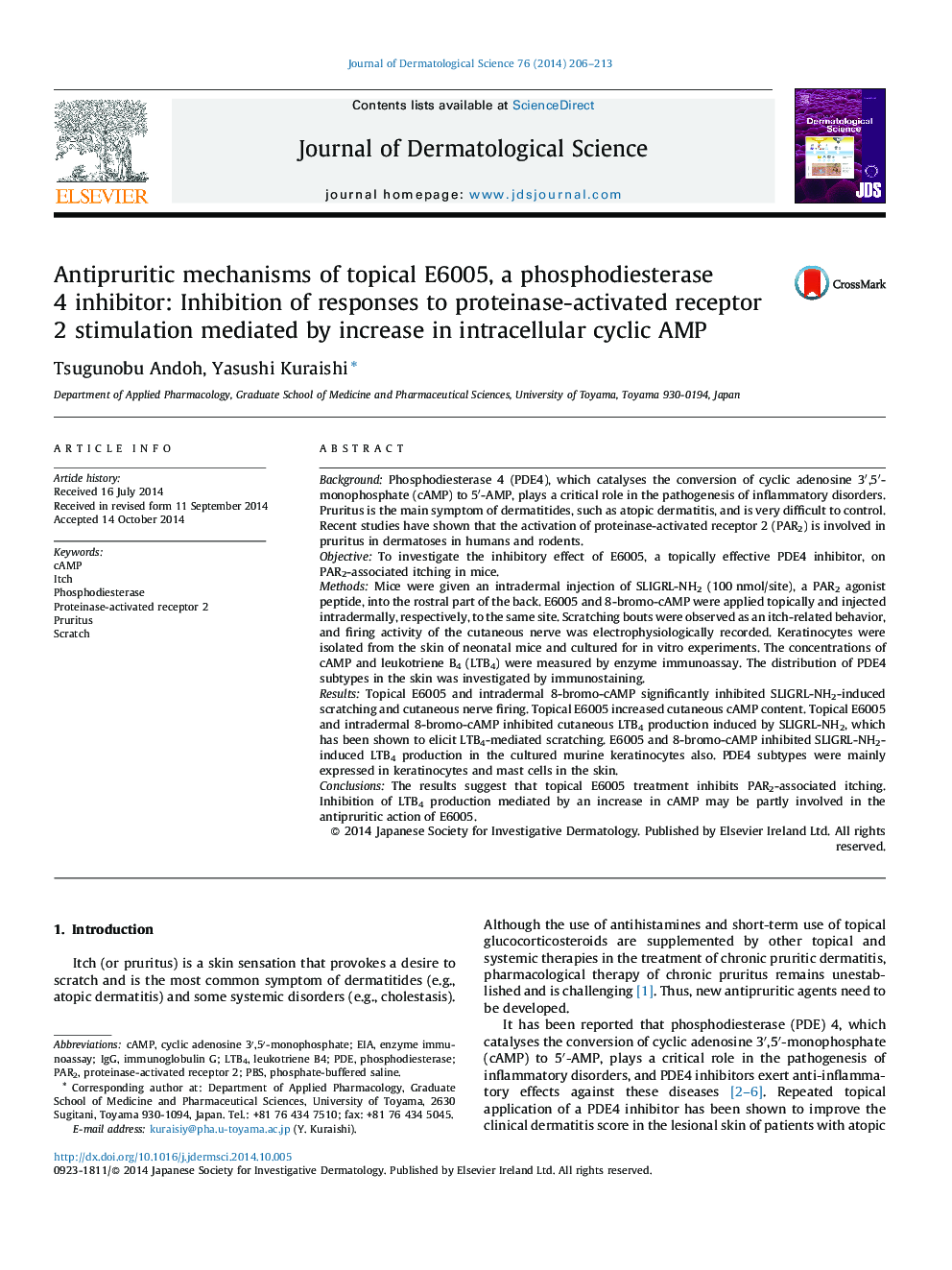| کد مقاله | کد نشریه | سال انتشار | مقاله انگلیسی | نسخه تمام متن |
|---|---|---|---|---|
| 3212617 | 1203188 | 2014 | 8 صفحه PDF | دانلود رایگان |

• Topical application of E6005, PDE4 inhibitor, inhibited PAR2-associated scratching.
• Topical E6005 inhibited cutaneous nerve firing induced by PAR2-activating peptide.
• Topical E6005 decreased cutaneous cAMP concentration.
• E6005 inhibited leukotriene B4 production in the skin and cultured keratinocytes.
• PDE4 subtypes were mainly expressed in keratinocytes and mast cells in the skin.
BackgroundPhosphodiesterase 4 (PDE4), which catalyses the conversion of cyclic adenosine 3′,5′-monophosphate (cAMP) to 5′-AMP, plays a critical role in the pathogenesis of inflammatory disorders. Pruritus is the main symptom of dermatitides, such as atopic dermatitis, and is very difficult to control. Recent studies have shown that the activation of proteinase-activated receptor 2 (PAR2) is involved in pruritus in dermatoses in humans and rodents.ObjectiveTo investigate the inhibitory effect of E6005, a topically effective PDE4 inhibitor, on PAR2-associated itching in mice.MethodsMice were given an intradermal injection of SLIGRL-NH2 (100 nmol/site), a PAR2 agonist peptide, into the rostral part of the back. E6005 and 8-bromo-cAMP were applied topically and injected intradermally, respectively, to the same site. Scratching bouts were observed as an itch-related behavior, and firing activity of the cutaneous nerve was electrophysiologically recorded. Keratinocytes were isolated from the skin of neonatal mice and cultured for in vitro experiments. The concentrations of cAMP and leukotriene B4 (LTB4) were measured by enzyme immunoassay. The distribution of PDE4 subtypes in the skin was investigated by immunostaining.ResultsTopical E6005 and intradermal 8-bromo-cAMP significantly inhibited SLIGRL-NH2-induced scratching and cutaneous nerve firing. Topical E6005 increased cutaneous cAMP content. Topical E6005 and intradermal 8-bromo-cAMP inhibited cutaneous LTB4 production induced by SLIGRL-NH2, which has been shown to elicit LTB4-mediated scratching. E6005 and 8-bromo-cAMP inhibited SLIGRL-NH2-induced LTB4 production in the cultured murine keratinocytes also. PDE4 subtypes were mainly expressed in keratinocytes and mast cells in the skin.ConclusionsThe results suggest that topical E6005 treatment inhibits PAR2-associated itching. Inhibition of LTB4 production mediated by an increase in cAMP may be partly involved in the antipruritic action of E6005.
Journal: Journal of Dermatological Science - Volume 76, Issue 3, December 2014, Pages 206–213